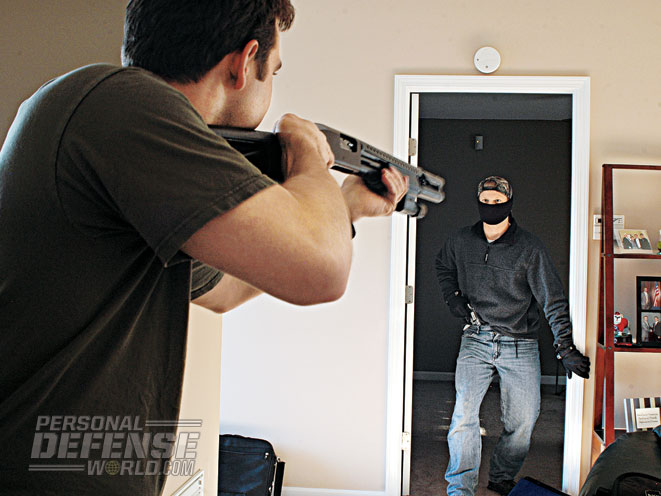“A man’s home is his castle; attacked there, he need not retreat.” It’s a catchphrase known even to people who don’t keep weapons for self-defense. It’s a tenet of the English common law, from which American law so largely derives. It’s called Castle Doctrine, and we will take a look at facts vs fiction concerning this law.
But as with any law, we don’t fully grasp it until we read the fine print. Anti-gun Senator Nancy Pelosi famously—or infamously—said, “We won’t know what’s in the law until we pass it.” The senator’s quote lives on today as a classic example of irresponsible stupidity.
And if any of us ever have to shoot a home invader in defense of ourselves or our families, and are forced to invoke Castle Doctrine, if we don’t know what it actually says, we would be just as irresponsible and just as stupid.
Advertisement — Continue Reading Below
Protect Your Home
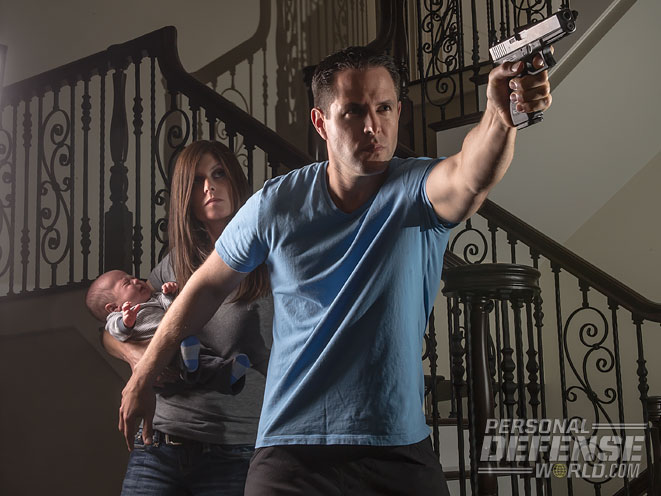
As it applies to the armed citizen, Castle Doctrine means that if you are attacked in your own home, you need not retreat, but may stand your ground and defend yourself with whatever force is necessary. The fine print is found, not only in the law itself, but in case law—the interpretation of the laws by the higher courts—which binds courts that follow at trial level with subsequent such cases.
Advertisement — Continue Reading Below
RELATED: 3 Stand Your Ground Myths Busted by Massad Ayoob
The law itself articulates certain exemptions. So will the case law. And, in the end, there are going to be at least two other elements in play that only those actually involved in trials seem to know about: trial strategy and jury psychology.
Most lawyers I’ve discussed it with tell me that they didn’t learn much about trial tactics in law school. “Law school taught me the law; I learned trial tactics ‘on the job’ and in CLE [Continuing Legal Education] seminars,” has always been the typical comment. Trial tactics—when bad lawyers try to stick it to good people—sometimes involve coming up with a fantasy of what happened. Unfortunately, what you and I would call BS is, when uttered by an attorney, dignified as “the plaintiff’s theory of the case” and must be treated in court as if it could be every bit as valid as the actual truth that you, the defendant who justifiably pulled the trigger, are trying to get across to the judge and jury.
Advertisement — Continue Reading Below
Jury psychology is very much in the same category, and we’ll go into that more deeply pretty soon.
Busting Myths
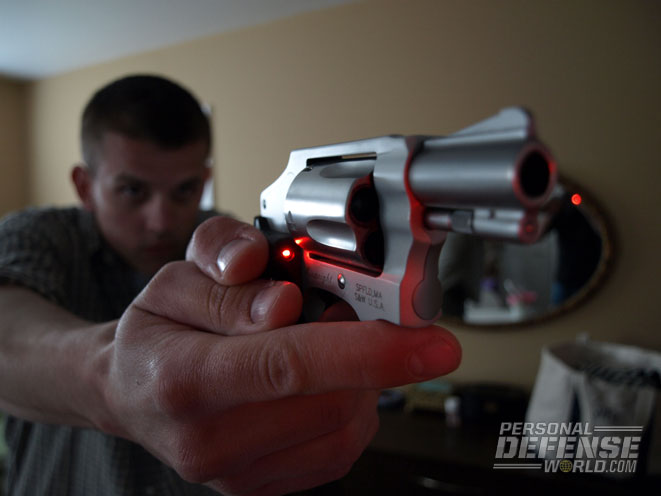
Advertisement — Continue Reading Below
Yes, you are the king or queen of your castle. Yes, your home is that castle. However, that doesn’t mean you’re allowed to install an execution chamber.
How many times have you heard someone say, “I can/will shoot any stranger I find in my house, because Castle Doctrine says I can”? Well, that simply isn’t the case. In one lawsuit in Florida, a man paid out a great deal of money when he shot a workman who—upon the shooter’s request—had come to his home to repair some storm damage. In the early morning twilight, the homeowner saw the man with a long object over his shoulder that he thought was a gun, so the homeowner opened fire and inflicted permanently crippling injury. Yes, that cost him a huge financial settlement. He was lucky he didn’t go to prison for it.
RELATED: 4 Headline-Grabbing Cases That Show the Need for Common Sense Tactics Against Unseen Dangers
Advertisement — Continue Reading Below
Another man set a trap for burglars and caught two, a young couple. He shot and killed both the boy and the teen girl when neither was trying to harm him. He is now in prison, convicted of murder, and is probably going to die there.
Ask yourself, “How many members of my family and extended family have I given keys to my home?” You wouldn’t have given those keys out if you didn’t think they were in responsible, trustworthy hands. But now ask yourself a second question: “Have I ever known anyone I loved and/or trusted who had something horrible happen in their life and seemed to go nuts for a while or perhaps just do something incredibly stupid?”
Now, let’s compare those two responses side by side for a moment.
Advertisement — Continue Reading Below
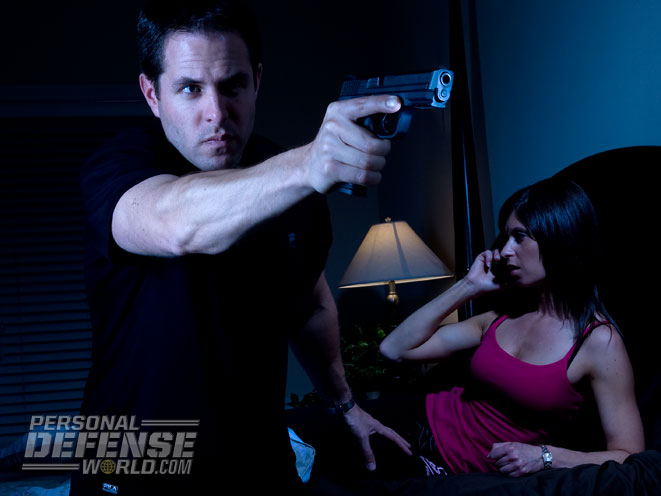
In one case I’m familiar with in New England, a man was blindsided by his wife with a demand for divorce, coupled with the cruelest imaginable diatribe against his attributes as a husband and a man. Stunned, he blindly walked out of his house to his car, grabbing his keys off a key rack as he exited the door, and just drove away. He was wearing casual evening clothes and did not have his wallet, ID or cash on his person. When he came to his senses late on that very cold night, he realized he didn’t have the wherewithal to get a hotel room nor a cell phone with which to call friends for help. But on his car key ring were keys to his own home he couldn’t bear to go back to that night—and the keys to the home of a good friend, which he watched over when the friend was out of town. He decided that if he just went there, he could let himself in, quietly “crash” on the couch and explain to his friend in the morning. As he entered the home in question, the friend—who lived alone—heard the door open and reached for his gun.
RELATED: 5 Cases Where The Attacker’s Violent Past Meant Zero During Trial
Advertisement — Continue Reading Below
In another case farther to the west, the male half of a childless couple heard the door open downstairs, awakening him from sleep. He realized his wife was sleeping next to him, and no one else was supposed to be in the house. He grabbed his gun and his flashlight, and went looking for the threat, not realizing that the door had been opened by his young brother in law, who had finished his college finals early, arrived in town late and thought he’d let himself in with his own key and “surprise” the hosts who were expecting him to arrive much later, when they woke up in the morning.
Both of those cases came perilously close to a tragic mistaken-identity shooting. Fortunately, good sense allowed each homeowner to identify the target and realize “Don’t shoot!” when the confrontation occurred. Everyone involved in both cases is glad that the homeowner with a gun wasn’t going with the theory of “shoot any unidentified person in my home.” We can learn from that.
Exemptions
Advertisement — Continue Reading Below

Understand, please, that everyone who lives in your home shares Castle Doctrine. It’s their castle, too. That includes people you have invited into your home. You’re having a party, and a guest becomes unexpectedly belligerent? It would be a really good idea for you to loudly announce your request for him to leave, loud enough for as many witnesses as possible to hear it. If, in the moments thereafter, that violent person starts a fight that you have to finish, it will be critically important later that he was clearly advised that he was no longer an invited guest, well before the moment came when you had to resort to countervailing violence to ward off his attack on you.
RELATED: Home Defense Lessons
Many lethal assaults occur in homes, either between members of the household themselves, or one of those and an invited guest. They don’t always turn out well for the good guy or gal. Many years ago in Massachusetts, it was determined in Commonwealth v. Roberta Shaffer that a woman ordered to leave the home owned by her common-law husband or be killed was in the wrong when she returned, the man attacked her and she killed him with one of his own guns.
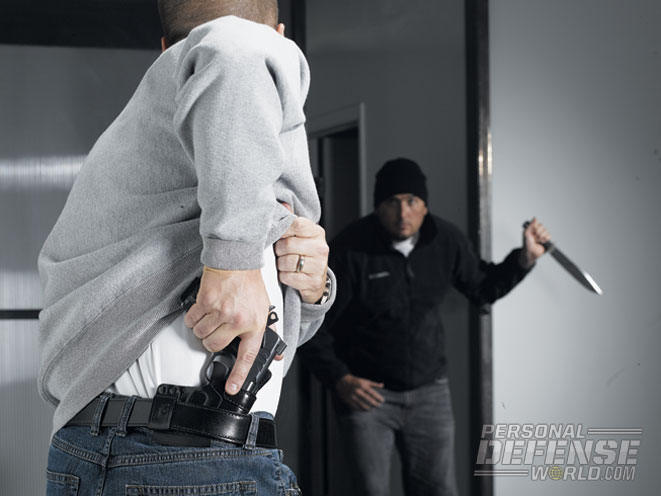
On the other hand, more recently, the Nebraska State Supreme Court, in State v. Darrell White, determined that the defendant was in the right when he killed a roommate who attacked him, and was not required to retreat (even though both shared Castle Doctrine). It appears that when both participants have Castle Doctrine on their side, the one cancels out the other. In such situations, one would have to be on solid ground with a case based on straight-up self-defense. Should the “no retreat by the householder” requirement become essential to proving pure self-defense, in a state that has a retreat requirement if one is attacked outside the home, always bear in mind that even in those states, retreat is never demanded by law, unless it can be accomplished in complete safety to oneself and others.
Such a situation would, as always, be measured by the reasonable person standard: “What would a reasonable and prudent individual have done, in the exact same circumstances the defendant was facing, knowing what the defendant knew?” And, again as always, the matter would be considered in light of “the totality of the circumstances.”
Jury Psychology
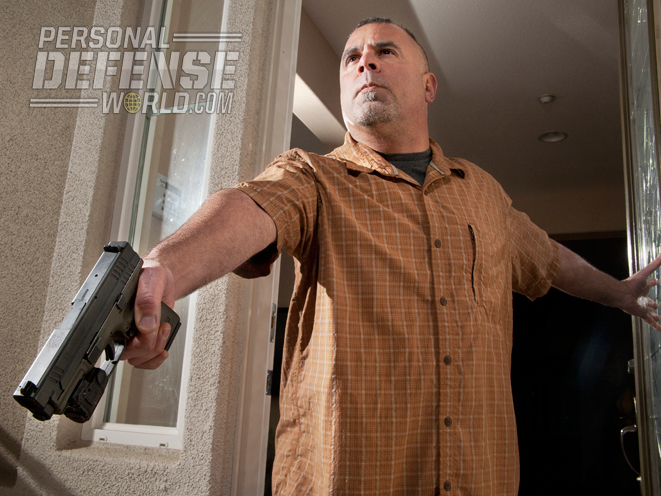
Castle Doctrine covers “home and curtilage,” which means closely associated grounds and outbuildings. A porch or attached garage or carport is usually considered curtilage. Exactly what outbuildings may constitute curtilage may be interpreted by individual jurisdictions’ case law, as determined by the relevant higher courts (courts of appeal).
Human instinct tells us to protect our house and grounds. There seems to be trouble outside our four walls that threatens us and our mate and our cubs? Instinct impels us to go out there and find out what’s going on! And, of course, if we have reason to perceive danger, we’d be stupid not to arm ourselves.
RELATED: Vigilant or Vigilante? Four Cases of Armed Citizens Leaving the Home
Unfortunately, one thing I’ve seen again and again over the years is this: Juries tend to be very forgiving of citizens who harm strangers invading their homes, but are singularly unforgiving of people they see as “having gone out looking for trouble.” It may not be right, it may not be how we think things should be, but that does seem to be how it is, and it is better to find that out in these pages now than from the prosecutor, when it’s too late.
The strategy of bunkering in your house, calling the police and making the intruder come to you is a tactically valid one: It forces him to make all the mistakes on unknown ground, and will probably eventually bring him to you on a path where you know he must come. It is also, by happy coincidence, a strategy much more defensible in court when home-defense situations require the householder to use defensive lethal force.
About The Author
Massad Ayoob is the author of the classic book on justifiable use of deadly force by private citizens in defense of self and others, In the Gravest Extreme, and the just-published addendum to it, Deadly Force, both available on Amazon. He has frequently taught on this topic to working trial lawyers for CLE credit for various bar associations and the Armed Citizens Legal Defense Network. Ayoob has served for 35 years as an expert witness before the courts in weapons and shooting cases.
